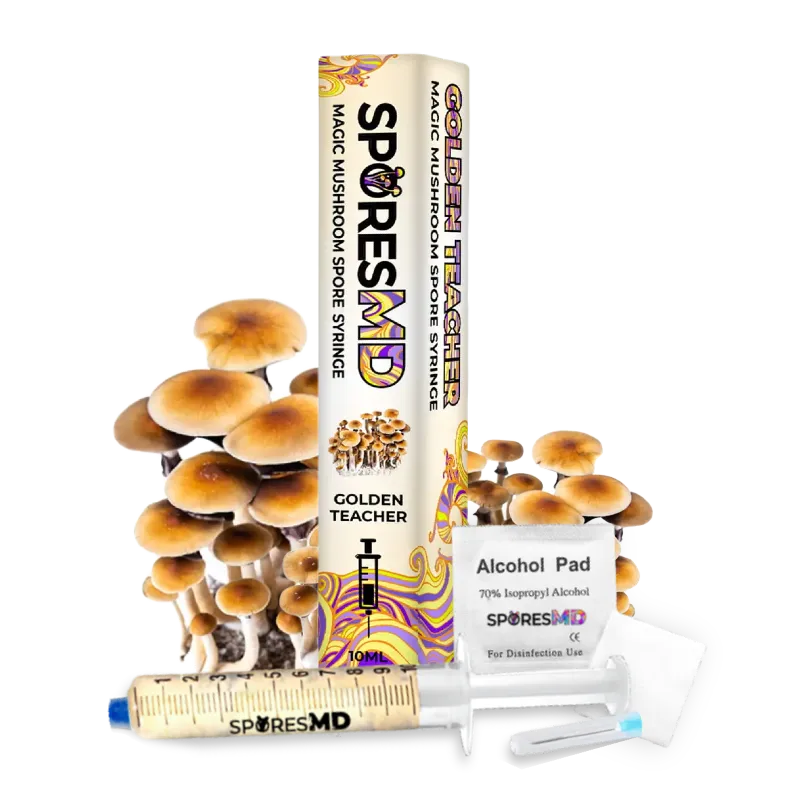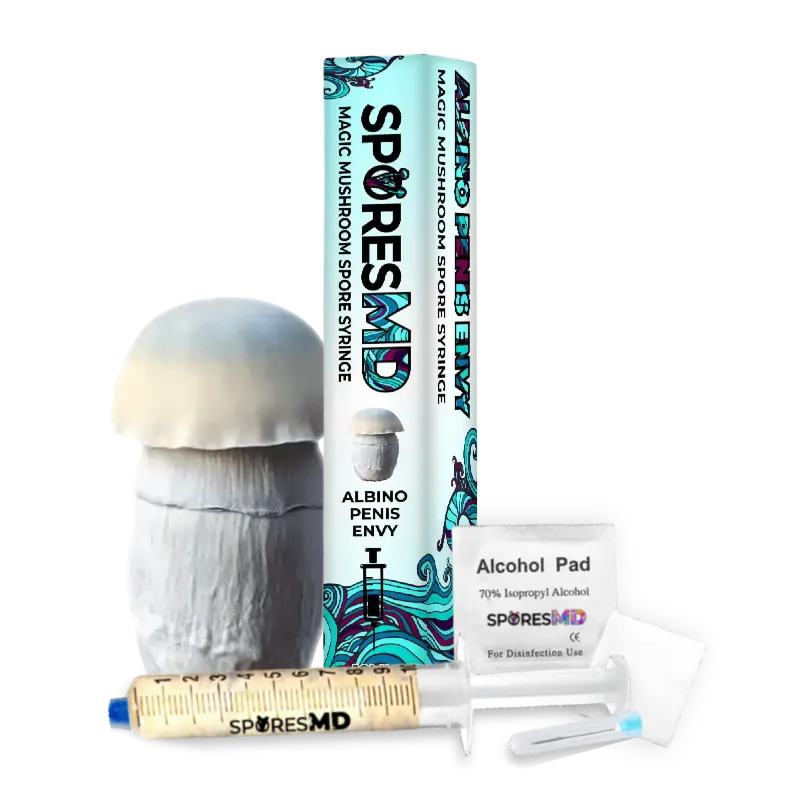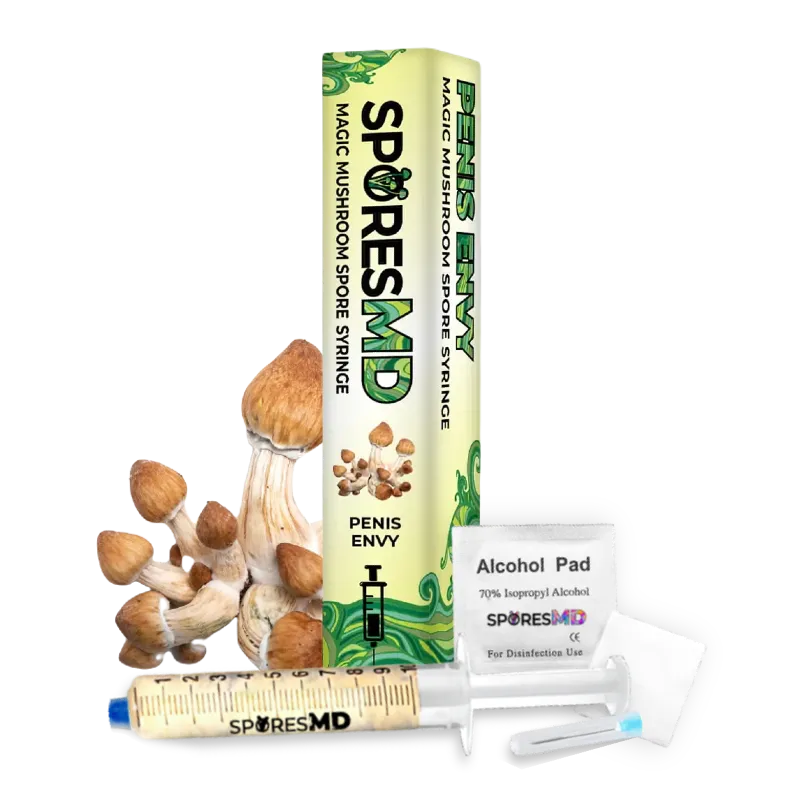Ever wondered about the lifespan of your spore syringe? How long they can remain viable and how you can prolong their shelf life? You’re not alone. These are common questions in the world of mycology, and understanding the answers is key to getting the most from your spore specimens.
In the fascinating world of microscopy spores, for instance, a properly sealed spore print can last substantially longer than a spore syringe. We’re talking years, even a decade, compared to the month-long viability of a typical spore syringe. But don’t worry, there are ways to extend the life of your spore syringes, and we’re here to guide you through them.
So, let’s delve into the details of spore storage and learn how to maximize the educational experience from your spore specimens.
Key Takeaways
- Spore syringes can last between one month to a year, with their lifespan strongly influenced by the quality of the spores and environmental factors like temperature. Optimal room temperature for storing spore syringes is 20-25°C.
- When handled and stored correctly, spore syringes can retain their viability indefinitely. It’s important to maintain a cool, dark environment for storage and avoid exposure to light and freezing conditions.
- The type and quality of the spores, as well as storage conditions, influence the lifespan of mushroom spores. microscopy spores, for instance, can remain viable for several years if properly stored.
- The sterility guarantee for a spore syringe lasts 30 days post-purchase. After this period, it is crucial to maintain proper use and storage conditions to maximize the syringe’s lifespan.
- Spore syringes lifespan is shorter compared to spore prints. However, proper refrigeration and using high-quality, sterile syringes can prolong their usability.
- Older mushroom spores display lower germination rates, hence maintaining high-quality spores and providing appropriate storage conditions are key to their longevity.
- Safety measures in mushroom cultivation involve creating a controlled, sterile environment and adopting good hygiene practices. Handling or misuse of the spores can lead to mild allergic reactions.
Understanding Mushroom Spores
Equipped with the fundamentals about spore syringes, let’s delve deeper into understanding mushroom spores, their life span in a syringe, and the factors affecting their viability.
Mushroom spores, tiny reproductive units, tint the heart of mycology study, housed in a syringe for easy research. Mostly, it’s within a spore syringe that mushroom spores demonstrate their magic, sprouting into the varying fungi types, depending on the specific mushroom strain they come from.
It bears worth noting the variability in syringe lifespan, often pegged between one month to a year. A paramount determinant is the quality of the spores. With meticulous attention to purity and laboratory-grade quality, a spore can maintain vitality up to the one-year mark.
Environmental factors, including temperature, also dictate a syringe’s longevity. Observations point towards optimal room temperature of 20-25°C as conducive for prolonged viability. Outside this range, the vitality of spores significantly depreciates.
Capping off, it’s the syringe quality that commands a spore’s shelf-life. High-grade, sterile syringes purpose-built for spore storage play a pivotal role in stretching the usability and success. Reject any compromises on syringe quality, propelling your mycology studies to untouched heights. Using these insights, you’re now poised to maximize your engagements with mushroom spores and mycology as a whole.
Spore Syringes: An Overview
Whether you’re a veteran in the field of mycology or a budding enthusiast, one component often stands out in your toolkit: spore syringes. These tools prove instrumental in research, aiding in mushroom cultivation and spore study.
A spore syringe, essentially, contains mushroom spores suspended in a sterile liquid, usually distilled water. It’s a specific delivery system employed to inoculate substrates, grains, or agar in mushroom cultivation. The use of a high-quality, sterile syringe remains paramount to extending a spore’s shelf life.
The sterility guarantee for spore and culture products lasts 30 days post-purchase. Within that period, a restocking fee, which is 20% of the item’s cost, applies to all returned items. The returned items must be in the original, unused condition. Keep in mind that written authorization is mandatory for all returns. No return policy exists for orders exceeding the 30-day limit or for orders shipped outside the USA.
Shipping charges do not qualify for refunds. Payment forms like credit cards, cashier’s checks, or US Postal money orders offer the fastest service as checks typically require clearance time. Additional shipping charges will apply if the shipper, for any unforeseen reason, returns orders.
Liquid culture products come with a guarantee for cleanliness and viability. If you find your cultures non-viable or contaminated, contact customer service for replacement arrangements. Avoid keeping the spores hydrated for an extended period since it might affect their viability.
Finally, note that invoices are not included with your order – unless requested in the special instructions during checkout. Effectively using spore syringes can greatly enhance your results in mycology, making them a worthy addition to your toolbox.
Lifespan of Mushroom Spores
Mushroom spores, known for their high vitality, exhibit an impressive longevity. Certain factors, such as the type of spores, their quality, and storage conditions can influence their lifespan.
- Spore Type and Quality: Different species of fungi produce spores with varying lifespans. Proper research helps determine the longevity of specific spores. Example: microscopy spores show notable vitality, often remaining viable for several years.
- Storage Conditions: Room temperature is optimal for spore syringe storage, between 20°C to 22°C. It’s imperative to avoid direct sunlight and high heat, as they deteriorate spore viability.
- Refrigeration: Cool environments, like refrigerated settings, can help enhanced longevity. However, freezing conditions aren’t favorable, risking the formation of ice crystals that might damage spores.
Interestingly, spore syringes can last anywhere between 12 months to numerous years, depending on aforementioned factors. They don’t have a defined expiration date, supporting indefinite use as long as they are stored appropriately.
It’s noteworthy to highlight the responsibility of suppliers as well to deliver syringes teeming with quality spores, packaged in sterile conditions. Improper handling can compromise spore viability, impacting their usability. Thus, handling and parameter optimization play vital roles, demonstrating how minute details summate to the larger picture of mushroom cultivation and mycology-oriented research.
Shelflife of Spore Syringes: How Long Do They Last?
When we talk about the shelf life of spore syringes, several factors come into play. Indeed, spore type, quality, and storage conditions could influence the longevity.
Understanding Viability
Spores encapsulated in syringes retain their viability, even through extended periods of time. This indefinite nature is possible if you maintain perfect storage conditions. Remember, exposure to high temperatures might reduce the spore’s potency over time.
Optimal Storage Conditions
For lengthening the viability of a spore syringe, it’s best to store it in a cool, dark place – not freezing. The refrigerator offers an ideal environment. The key is to avoid freezing and light exposure.
Role of Suppliers
Safe handling and storage are crucial, but there’s something more. The quality of spores and syringes set up by your supplier plays a significant role too. It’s in their responsibility to assure the sterility of syringes and spore quality at source.
Handling Spore Syringes
Each spore syringe comes with a 30-day sterility guarantee, beyond which proper use and storage are essential. Ensuring that your syringes remain in an original, unused condition is imperative in maintaining viability.
Returns and Refunds
For any returns, they must come with a written authorization, within 30 days post-purchase. There’s a 20% restocking fee, and any return shipping charges aren’t refundable. In case of checks, clearance might take some time.
Purchasing overseas? Well, no refunds or returns apply for orders shipped outside the USA. And if there are any issues with a liquid culture product, make sure to get in touch for replacement arrangements.
With conscientious handling and storage, it’s entirely possible to use single spore syringes indefinitely.
Proper Storage of Mushroom Spores
For the longevity of mushroom spores, storage plays a pivotal role. Keep your spore syringes refrigerated, or at a minimum, in a cool, dry place, optimizing their shelf life. Note, this forms a general criterion for mushroom syringe spore storage.
Let’s delve deeper using a few key points:
- Spore Syringes Longevity: Spore syringes remain viable for a shorter duration compared to spore prints. The consensus declares syringes suitable for use within a period not exceeding 30 days.
- Long-term Storage: On the contrary, a well-sealed microscopy spore print may last impressively longer. Its lifespan often stretches to a few years, with some instances even reaching nearly a decade.
- Poor Quality Syringes: A malformed or deteriorating syringe may steal years away from a spore’s lifespan. Consequently, a dedicated focus falls on the quality of the initial spore syringe acquired.
- Optimal Storing Conditions: The rule of thumb, keep the syringes refrigerated. Alternatively, if immediate use is planned, a cool, dry enclosure suffices.
Reiterating, the heart of the matter, maintain an adequate environment, guaranteeing the optimal educational exploration of your spore specimens.
When Do Spores Lose the Ability to Germinate?
Spores lose their ability to germinate depending on certain factors, such as the specific species, nature of storage and age. Usually, under proper conditions, spores remain viable for long periods.
- Species: Some species of mushroom spores, under optimal conditions, can stay viable for many years.
- Nature of Storage: Spore syringes, properly stored in cool, dry conditions, can maintain spore viability for up to 30 days, while microscopy spore prints sealed appropriately may last several years. Refrigeration is a crucial factor of maintenance, safeguarding spores from warm temperature and humidity, which reduce longevity.
- Age: Older spores generally display lower germination rates. As years pass, the likelihood of successful germination decreases.
Spore quality plays a vital role in this process too. A spore syringe created from a dense, large spore print can create multiple syringes and can increase spore longevity with higher spore concentration.
Remember, you’re conducting educational exploration using spore specimens. Keeping syringes of high quality and providing appropriate storage conditions maximizes this exploration by preserving their lifespan.
Indicators of a Bad Spore Syringe
Identifying a failed spore syringe involves assessing certain factors. Understanding these symptoms is essential before delving into the science of mushroom spore cultivation. Here are a few indicators you can monitor:
Smell: A spore syringe emits no smell ordinarily. If there’s an unusual odor, it’s an indication of contamination.
Visual Check: Observe the liquid in the syringe. Clear liquids represent healthy spore suspension. On the other hand, colorful or cloudy fluids suggest an issue.
Product Efficiency: A malfunctioning syringe might compromise the growth of your cultures. If there’s failed germination or slow growth, it might be your syringe’s fault.
Guaranteeing a sterile environment is crucial while making the syringe. Remember, unpressurized cooking methods can’t sterilize adequately, and utilizing a pressure cooker becomes necessary. Respecting the sterility chain helps avoid bacterial contamination.
Importantly, purchasing from reputable sellers ensures a higher success rate. Top brands typically offer a sterility guarantee, stipulating product performance up to 30 days after purchase. This assurance can save valuable resources and ensure timely replacements in the event of failures.
Remember, visual indicators don’t always mean the spore syringe is bad. It’s always best to attempt cultivation before assessing and assuming a syringe has failed. After all, mushroom cultivation is a process of exploration and patience.
Risks and Safety Measures: Are Mushroom Spores Dangerous?
Before delving into the query of danger associated with mushroom spores, note that every action incurs a certain level of risk. Mushroom spores, as innocuous as they seem, fall into this broader spectrum.
In the realm of mushroom cultivation, incidents of harm from spores are minimal, working predominantly within a sterile environment. However, you might encounter a mild allergic reaction due to inhalation of a large quantity of airborne spores. Symptoms such as coughing, wheezing, and discomfort fall under this category.
Protective measures involve creating a controlled environment for cultivation and embracing thorough hygiene practices. The usage of gloves, covering the mouth and nose, and disinfecting the workstation are steps to ensure safety.
On the flip side, remember, mishandling or misuse of the spores can be a liability. Domains involving cultivation of psychedelic or illegal mushrooms are instances of such.
Yet, the essential fact to remember is mushroom cultivation, specifically involving mushroom spores, is generally safe. The key lies in appropriate understanding and careful application. The risks outlined here aren’t significantly high or label mushroom spores as a dangerous species. As a cultivator, exercise caution, follow safety protocols, and make correct, informed decisions. Prevention is your safest bet.
Finally, note that staying informed about source quality raises the safety bar by several notches. Always opt for sellers providing a sterility guarantee on spore and culture products. Safety situations rest primarily on ensuring a sterile, controlled environment for cultivation and careful handling of spores. That’s your primary line of defense against potential risks.
Pros and Cons of Spore Prints vs Spore Syringes
Assessing the benefits and drawbacks of spore prints and spore syringes, it’s evident that each has its unique merits.
Spore prints, for instance, are known for their longevity. Stored correctly, they can maintain their viability for several years. This durability provides the flexibility to initiate mushroom cultivation at your preferred timeline. Additionally, they typically contain millions of spores, offering you abundant potential for multiple cultivating attempts.
However, the downside to using spore prints is their density variation. A small, faint print may only produce one 10ml syringe, while a more dense, larger print could lead to the creation of up to 30 syringes. Thus, the size and density of a spore print critically influence your cultivation output.
Moving on to spore syringes, the immediate benefit lies in ready-to-use convenience. The spore solutions are already prepared, and can be simply injected onto your substrate for colonization. Certain cultivators favor syringes for the easy visualization of spores without needing a microscope.
Yet, as a trade-off, spore syringes present a shorter lifespan. Despite being easy to use, they require refrigeration for proper storage and may not last as long as the prints.
Remember, your choice between spore prints and syringes mostly hinges on personal preference. Consider the long-term viability of prints against the immediate application of syringes, and choose what suits your cultivating style and requirements best.
Conclusion
So, you’ve seen how crucial proper storage is for the longevity of your mushroom spores. Refrigeration is key to maintaining spore viability, and the quality of your spores can significantly impact germination rates. It’s also clear that safety is paramount when handling mushroom spores. A sterile environment minimizes risks, but you should always be aware of potential allergic reactions.
When it comes to choosing between spore prints and spore syringes, there’s no one-size-fits-all answer. Spore prints offer longevity and multiple cultivation opportunities, but they can be inconsistent. Spore syringes, while convenient and easy to use, may not last as long and do require refrigeration. It all boils down to your personal preference and cultivation style.
Remember, the key to successful mushroom cultivation lies in the details – from the quality of your spores to the way you store and handle them.

![Understanding the Lifespan of Spore Syringes: A Comprehensive Guide [2024 Update]](https://sporesmd.com/wp-content/uploads/2024/04/TQFGDKpzbrWEvnzqvb7AM.jpeg)



